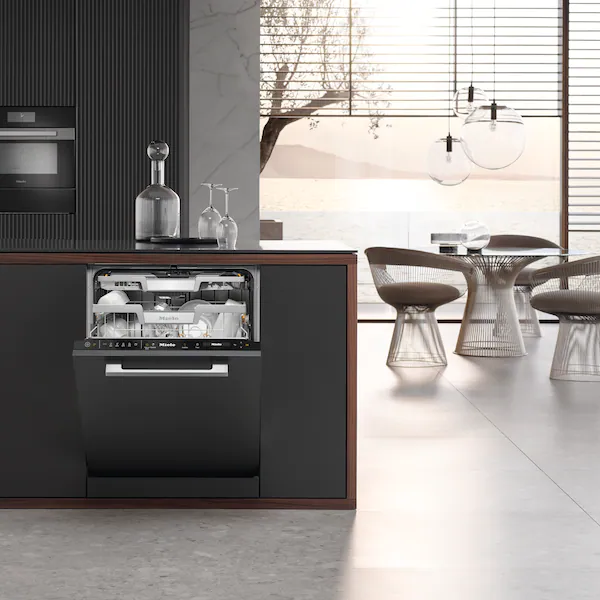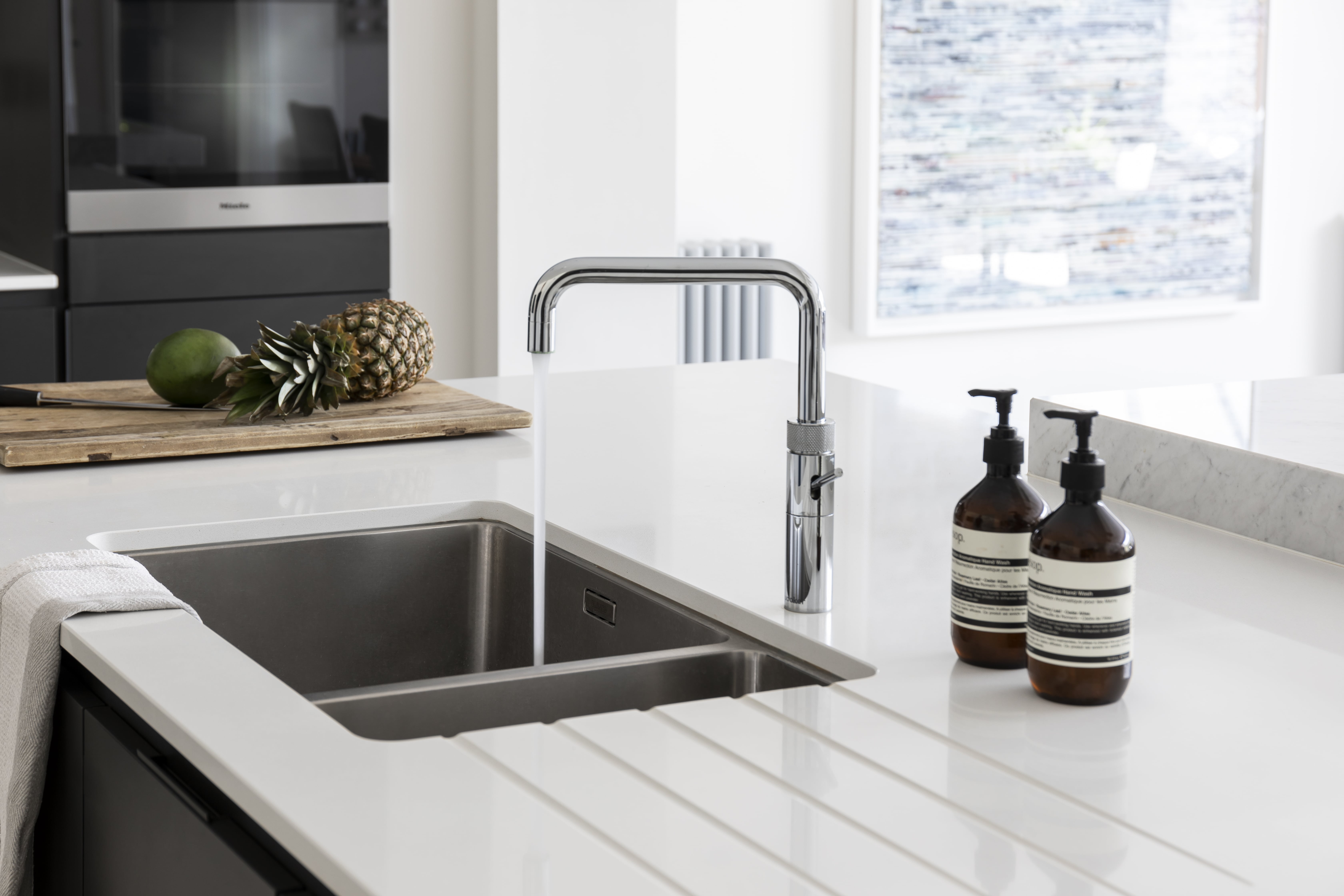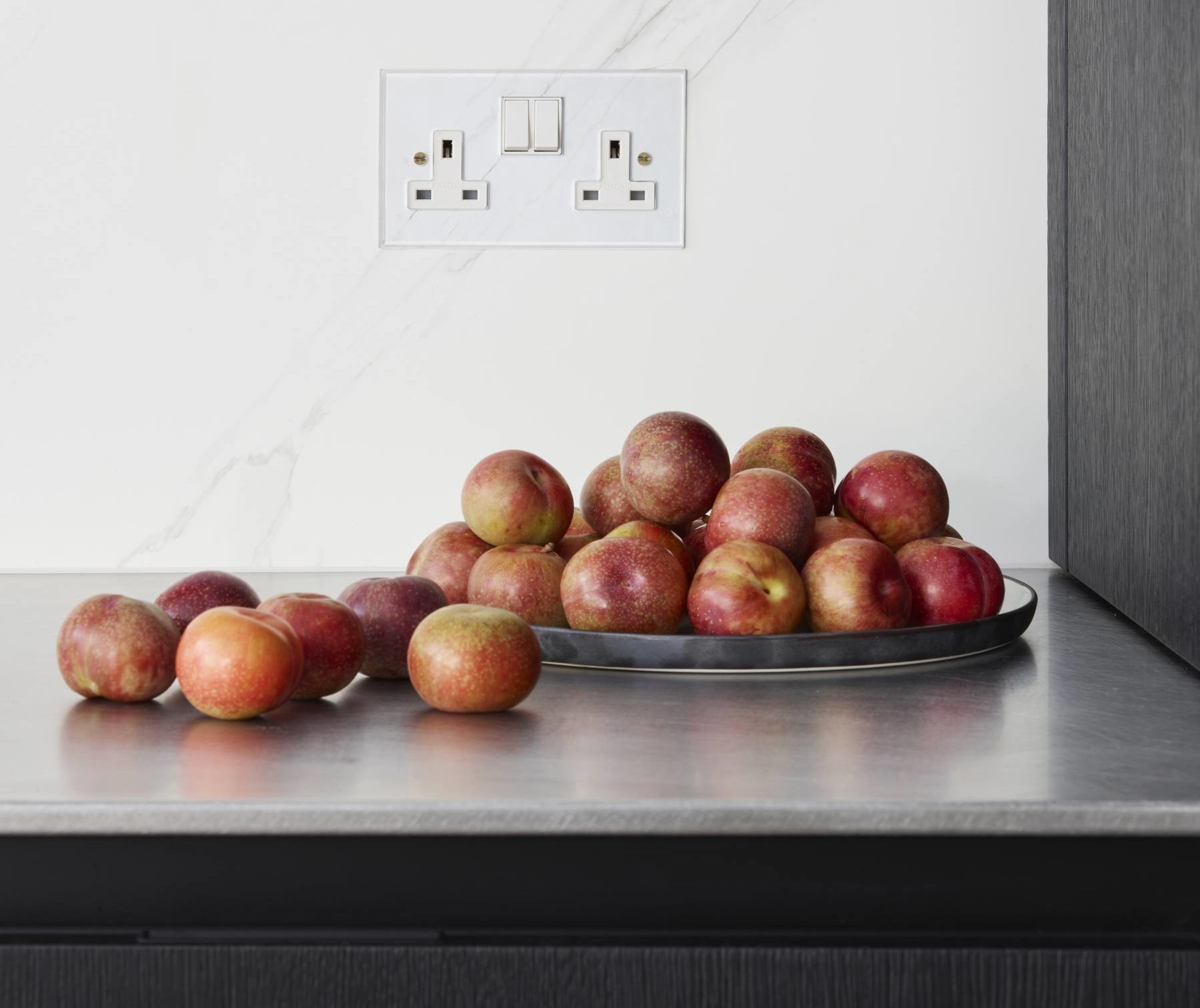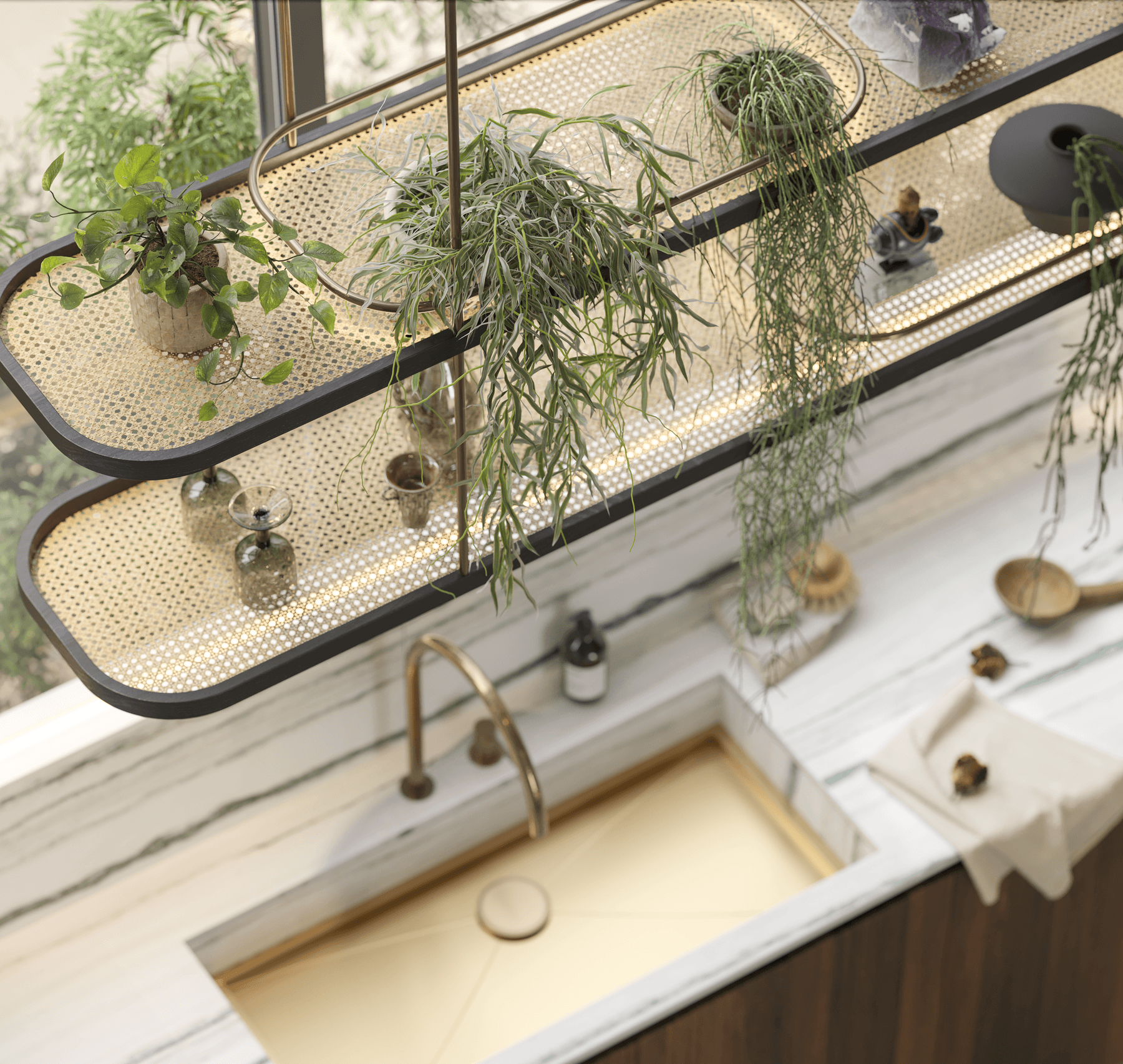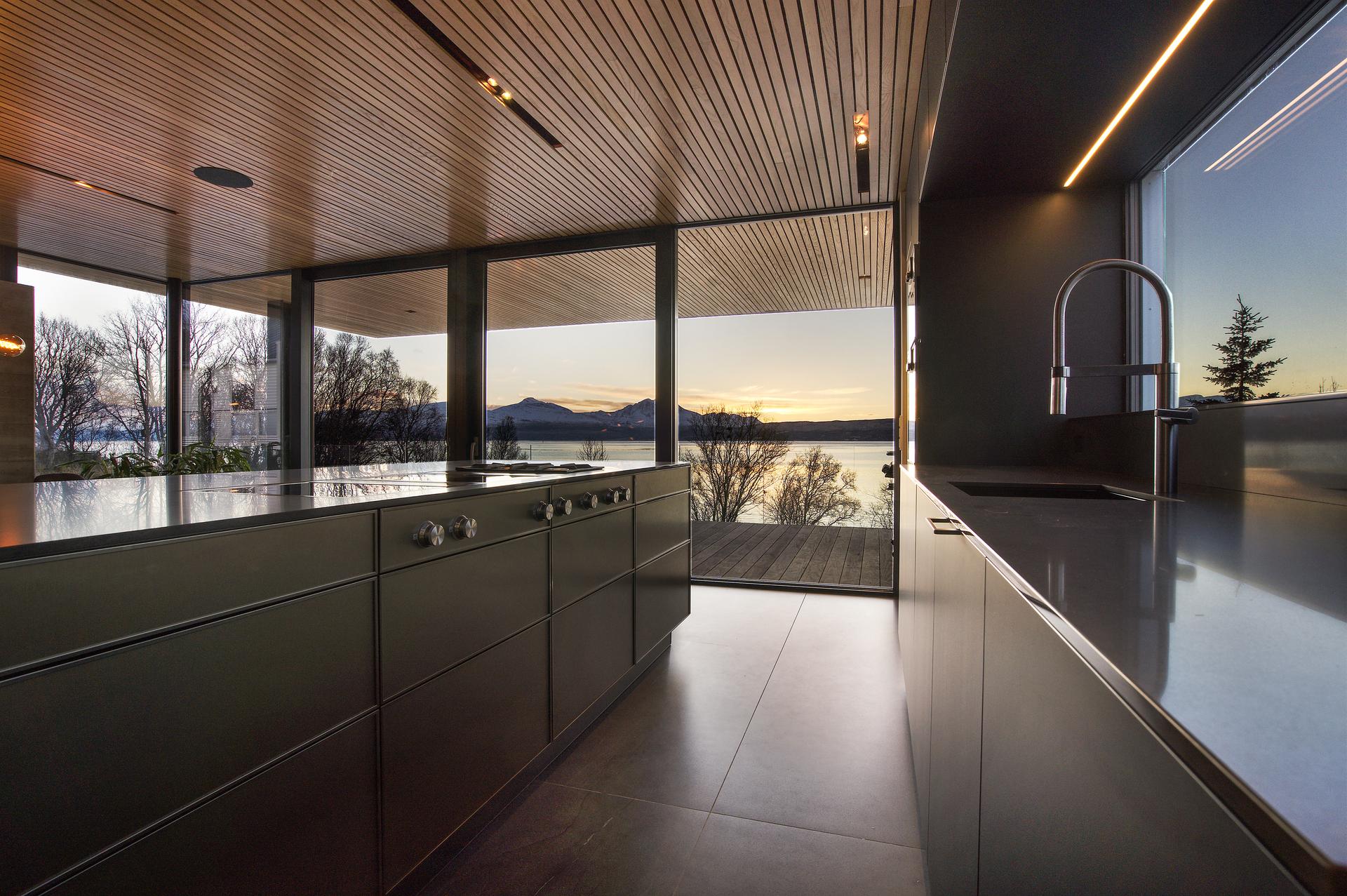
All of us are increasingly aware of our individual and collective need to make more sustainable choices – at home, at work, in our food shopping and in our energy use. Every little change makes a difference, whether we’re a big corporation or just one person. With that in mind, as we head into the new year it’s not the passing resolutions that will give us a better quality of life, but the commitments that form the fabric of our existence, and even our homes.
A better kind of New Year’s resolution
Across the board, the greatest environmental benefits come from combining our infrastructure and our daily habits, asking ourselves where we can drive circularity, reduce waste and minimise our carbon footprint.
The new King Charles, who has been flying the flag for environmentalism since long before it was fashionable, has said: “The greatest challenge we face is to reform our relationship with nature, to put sustainability at the heart of our economy and to recognise that the conservation of nature is not a luxury but a necessity.”
By making changes to our homes and habits today, we’re not only doing the right thing but making significant wellbeing gains for ourselves, our families and the communities around us. How we literally build the world around us gives us power to make a positive impact every day, supercharging our routines and providing a framework in which we can live better.
As we start a new year, with all its promise and possibility, instead of limiting our resolutions to January and the gym, it’s a wonderful time to set sustainable intentions for the year ahead – especially when it comes to our homes.
Setting ourselves up for sustainable success
At Nicholas Anthony, we know the value of creating homes that exist in harmony with the natural environment – for the beauty and enjoyment of our homes, as well as the health and wellbeing of people and the planet. For us, sustainability is deeply rooted in quality. A kitchen or bathroom that’s beautifully made with high quality materials and engineering, will last longer, work better and will always be re-sellable, should you fancy a change down the line.
Quality has always been the cornerstone of everything that we do at Nicholas Anthony, from our own craftsmanship to the partnerships we have nurtured with the likes of Siematic, Gaggenau, Occhio and more. These are brands that, like us, are not merely interested in being part of a sustainability box checking exercise. Instead, they develop their own stringent policies whilst aligning with the likes of the Klimapakt für die Möbelindustrie (climate pact for the furniture industry) of the Deutsche Gütegemeinschaft Möbel, the Sustainable Development Goals of the United Nations, the international certification system FSC®, and even the Forest Stewardship Council (FSC) for sustainable wood sourcing.
Each of these organisations, including our own, is on an endless quest for continual improvement, especially when it comes to the key areas of sustainability that we can directly impact every day:
- Water conservation: Implementing systems in the home that use water efficiently, from low flow aerators on taps and showers to filling up and using Energy Star–certified dishwashers.
- Energy efficiency: Seeking out energy efficient solutions in the home, from maintaining new equipment for optimum functionality to using energy efficient fittings or generating energy from renewable sources.
- The circular economy: Repairing, refurbishing, reusing, leasing or sharing products, materials and resources wherever possible.
- Waste management: Looking to reduce waste production in our daily lives and only recycling as a last resort.
- Environmental conservation: The practice of protecting the natural environment and considering the way we interact with natural habitats.
Little changes make a big difference
The planning process for spaces within the home is fundamental to sustainability that’s imbued into all areas of our lives. It’s easier to create a sustainable infrastructure and operate effectively within it, than to retrofit ideas into systems and spaces that weren’t designed to support those intentions.
However, whether you’re selecting new equipment or updating your entire kitchen or bathroom, it’s these highly functional spaces that have the most opportunity for sustainability improvements. Here are just some of the concepts that we try to bring to each design we’re part of:
Water conservation at home
Water conservation in the home has a dual impact when it comes to supporting the environment, reducing energy consumption as well as retaining the amount of water in our ecosystems.
The little things we do to make a difference all add up to keeping wetland habitats topped up for wildlife and reducing our carbon footprint. We can do that in little actions like turning off the tap while cleaning our teeth or only using the dishwasher when it’s full.
We can also make more significant additions, such as adding shower stop valves and tap aerator flow restrictors, which can reduce the amount of water flowing from the tap by more than 50%.
Energy efficiency to support the environment
Everything we do to conserve energy helps to protect the natural environment by cutting down greenhouse gas emissions. A helpful byproduct of proactively reducing our energy consumption at home is that we also reduce our cost of living.
High end appliances generally take energy conservation into account at the point of design and production. Great quality usually means items are longer-lasting, so there’s reduced need for replacement or unnecessary manufacturing and associated energy use. These appliances also optimise energy use on a daily basis. For example, Miele dishwashers are designed to conserve energy, are tested to the equivalent of 20 years’ use and are built using high grade, recyclable materials.
According to the Energy Saving Trust, lighting makes up 11% of the average UK household electricity consumption, but by using LED lights you can reduce your carbon dioxide emissions by up to 50kg (50kg in NI) a year. At the point of designing a space, you can reduce the need to turn lighting on by maximising the opportunities for natural light (as long as this is counterbalanced with suitable insulation).
Meanwhile, in terms of habits, turning off plugs, computers and televisions instead of leaving them on standby then you save on average one watt an hour. There are 8760 hours in a year. While that won’t make an enormous cash saving, it does contribute to your household’s overall energy consumption – an easy win for effectively doing nothing.
Being part of the circular economy
While lots of us have become used to having many recycling bins and doing our bit for the environment that way, recycling is something of a bandage solution. In an ideal world, we need to reduce waste production, especially when it comes to things that were not meant to be disposable, like kitchen units, building supplies and single use plastics.
Reused and recycled products are not only better for the environment as they reduce waste and total annual greenhouse gas emissions, but they can be stylish as well, whether it’s reclaimed stone countertops or vintage furniture. Considering a product’s role in the circular economy from the start is a powerful way to support the environment. For example, installation can include processes that allow for independent replacement or repairs and future disassembly so they can be reused elsewhere.
You can also be conscious about home renovations with platforms like Rehome, the used kitchen exchange, where they resell your entire kitchen to enhance its lifecycle and keep it from going to waste. This is once again where quality speaks volumes – at Nicholas Anthony, we often work with Rehome when clients want to change their kitchens, and thanks to the quality of our work, our kitchens always find new homes to go to easily.
Improving waste management
Perhaps not the most glamorous of home features, but a fundamental one that can make a big difference both to our quality of life at home and the world around us, is waste management. Done well, it reduces single-use plastics, minimises the amount of waste that goes to landfill, supports wildlife better and (collectively), improves our own health and wellbeing by reducing microplastics and contamination in the earth – it all adds up. Better waste management can also be cost effective and reduce the amount of excess packaging you have to handle at home.
Making personal choices such as shopping in local stores and selecting items that are not in unnecessary packaging, taking bags for life and opting for refillable solutions when it comes to things like cleaning products, are all great habits to get into. However, you can also choose items to have within the home that improve waste management. For example, creating storage solutions to host refillable glass jars and bottles delivers the kind of forethought that will set you up to manage environmentally healthy habits.
Amongst our favourite kitchen appliances are Gaggenau’s vacuum drawer and BORA’s built-in QVac vacuum sealer. Both have the dual effect of minimising waste and allowing you to embrace the economies of scale that go with batch cooking, thereby reducing food miles and energy consumption as well. These appliances are not only aesthetically smart, but they offer an added benefit: they effectively seal food, enabling it to be frozen and cooked later while maintaining its quality and vitamin content.
Composting is another excellent way of using food waste for good. By recycling the nutrients from our food waste back into the ecosystem, we can enrich the soil and keep food out of energy consuming waste processing. For example, products like the Lori kitchen composter turn waste into natural fertiliser for the garden.
Environmental conservation at home
We have already touched on environmental conservation through the use of composting, but proactively contributing to biodiversity, increasing plant life and enabling nature to flourish in and outside our houses and apartments is good for us, our environment and future generations. It’s also an incredibly beautiful thing to watch unfold throughout the seasons.
No matter how much space we have, or where we live, we can support nature in our own little ways. We have spoken before about the benefit of biophilic design (including plants and natural elements in the home), as well as bringing as much of the outside in as possible.
That might mean incorporating plant boxes and miniature herb gardens on our window sills, even building them into the structure of the kitchen. For those with larger spaces, it might mean letting corners of it run wild, letting nature take its course, planting wildflowers that attract pollinators, and seeing the butterflies flood to them in the summer.
Perhaps you will take the time to feed the little birds in the winter, or grow your own vegetables so it’s one less thing you need to shop for. Or maybe it’s switching to organic foods and products approved by the Soil Association or with Free Trade accreditation.
Environmental conservation is one of our favourite aspects of sustainability because it’s filled with joy and has absolutely no downsides – just the inherent knowledge that you’re doing something good. What a wonderful mindset with which to step into 2024.




